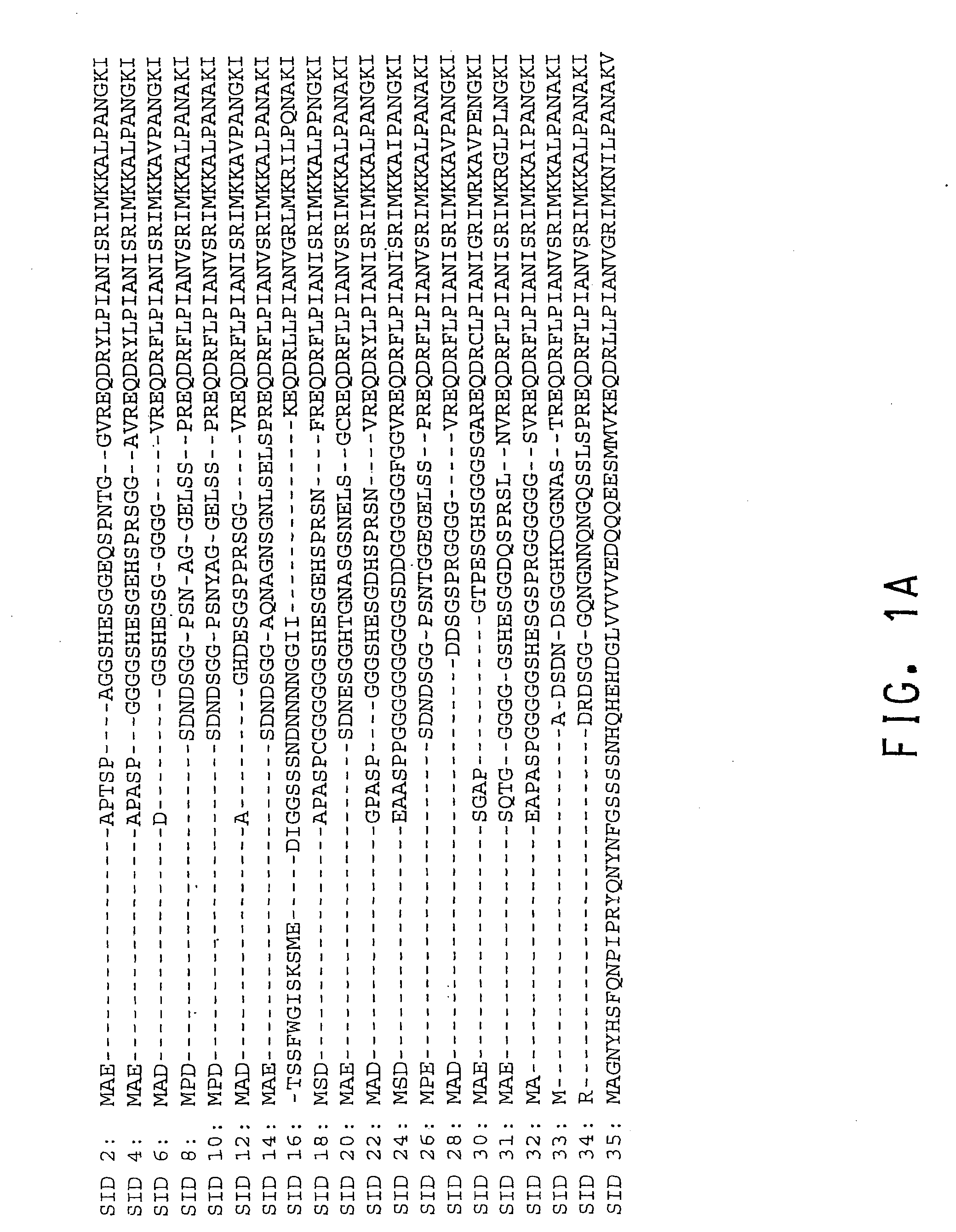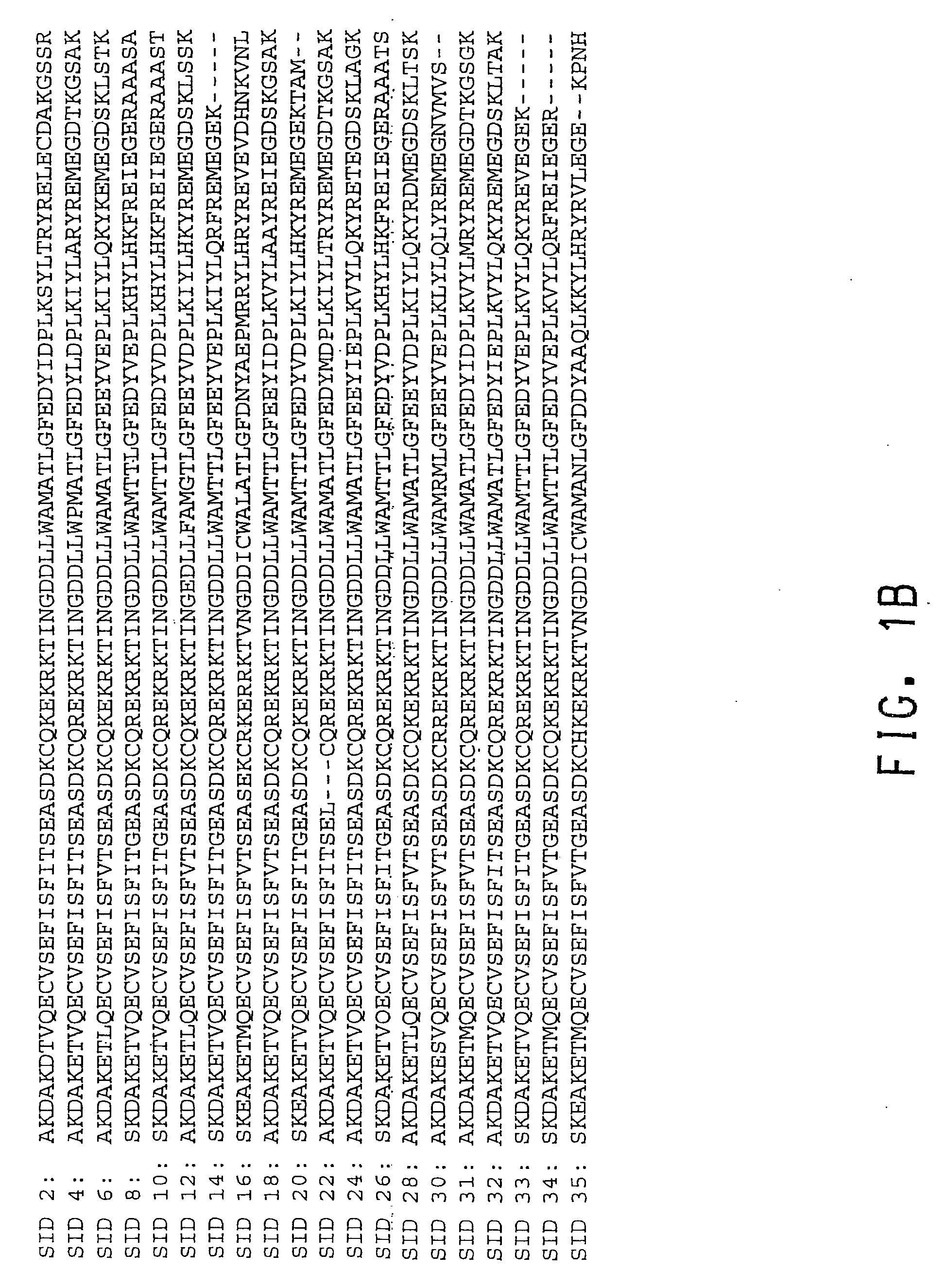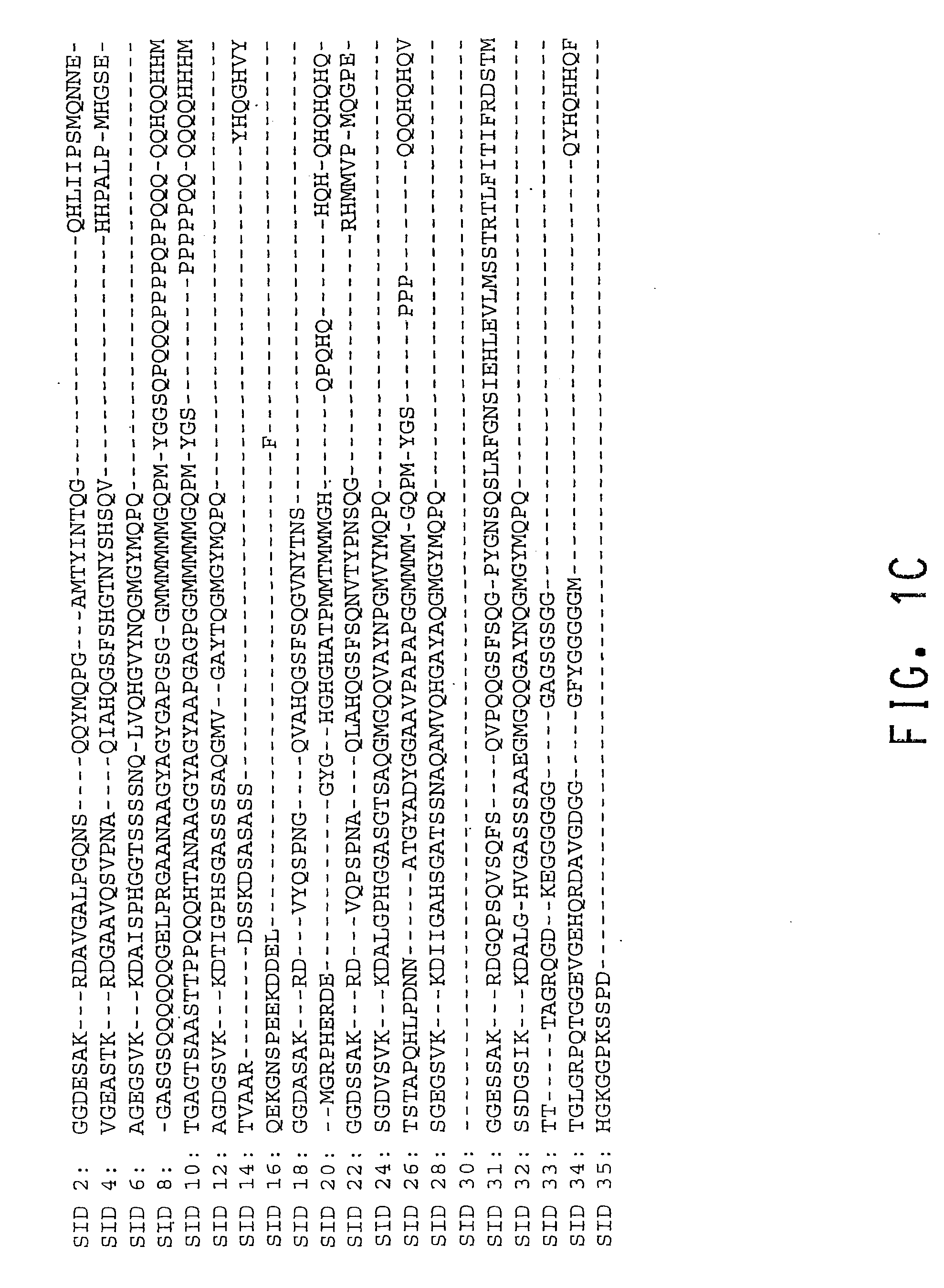Plant Transcription Factors
- Summary
- Abstract
- Description
- Claims
- Application Information
AI Technical Summary
Benefits of technology
Problems solved by technology
Method used
Image
Examples
example 1
Composition of cDNA Libraries; Isolation and Sequencing of cDNA Clones
[0075]cDNA libraries representing mRNAs from Momordica charantia, Eucalyptus tereticomis, corn, rice, soybean, wheat, and Canna edulis tissues were prepared. The characteristics of the libraries are described below.
TABLE 2cDNA Libraries from Momordica charantia, Eucalyptus tereticornis,Corn, Rice, Soybean, Wheat, and Canna edulisLibraryTissueClonefdsMomordica charantia developing seedfds.pk0003.h5ect1cCanna edulis tubersect1c.pk007.p18eef1cEucalyptus tereticornis flower buds from adult treeeef1c.pk004.c8cbn10Corn developing kernel (embryo and endosperm); 10cbn10.pk0005.e6days after pollinationp0006Corn young shootp0006.cbysa51rrl0nRice 15 day old leaf*rl0n.pk0061.c8rsl1nRice 15-day-old seedling*rsl1n.pk002.g10ses4dSoybean embryogenic suspension 4 days afterses4d.pk0037.e3subculturesrc2cSoybean 8 day old root infected with cyst nematodesrc2c.pk003.i13Heterodera glycenissrc2c.pk011.m12src2c.pk025.b3src3cSoybean 8 da...
example 2
Identification of cDNA Clones
[0081]cDNA clones encoding LEC1-related transcription factors were identified by conducting BLAST (Basic Local Alignment Search Tool; Altschul et al. (1993) J. Mol. Biol. 215:403-410; see also the explanation of the BLAST algorithm on the world wide web site for the National Center for Biotechnology Information at the National Library of Medicine of the National Institutes of Health) searches for similarity to sequences contained in the BLAST “nr” database (comprising all non-redundant GenBank CDS translations, sequences derived from the 3-dimensional structure Brookhaven Protein Data Bank, the last major release of the SWISS-PROT protein sequence database, EMBL, and DDBJ databases). The cDNA sequences obtained in Example 1 were analyzed for similarity to all publicly available DNA sequences contained in the “nr” database using the BLASTN algorithm provided by the National Center for Biotechnology Information (NCBI). The DNA sequences were translated in ...
example 3
Characterization of cDNA Clones Encoding LEC1-Related Transcription Factors
[0083]The BLASTX search using the EST sequences from clones listed in Table 3 revealed similarity of the polypeptides encoded by the cDNAs to LEC-1-related transcription factor from Arabidopsis thaliana (NCBI General Identifier No. gi 6729485), Arabidopsis thaliana (NCBI General Identifier No. gi 2398529), Arabidopsis thaliana (NCBI General Identifier No. gi 3738293), Zea mays (NCBI General Identifier No. gi 22380). Shown in Table 3 are the BLAST results for individual ESTs (“EST”), the sequences of the entire cDNA inserts comprising the indicated cDNA clones (“FIS”), the sequences of contigs assembled from two or more ESTs (“Contig”), sequences of contigs assembled from an FIS and one or more ESTs (“Contig*”), or sequences encoding an entire protein derived from an FIS, a contig, or an FIS and PCR (“CGS”):
TABLE 3BLAST Results for Sequences Encoding PolypeptidesHomologous to Arabidopsis thaliana and Zea maysL...
PUM
| Property | Measurement | Unit |
|---|---|---|
| temperature | aaaaa | aaaaa |
| temperature | aaaaa | aaaaa |
| temperature | aaaaa | aaaaa |
Abstract
Description
Claims
Application Information
 Login to View More
Login to View More - R&D
- Intellectual Property
- Life Sciences
- Materials
- Tech Scout
- Unparalleled Data Quality
- Higher Quality Content
- 60% Fewer Hallucinations
Browse by: Latest US Patents, China's latest patents, Technical Efficacy Thesaurus, Application Domain, Technology Topic, Popular Technical Reports.
© 2025 PatSnap. All rights reserved.Legal|Privacy policy|Modern Slavery Act Transparency Statement|Sitemap|About US| Contact US: help@patsnap.com



